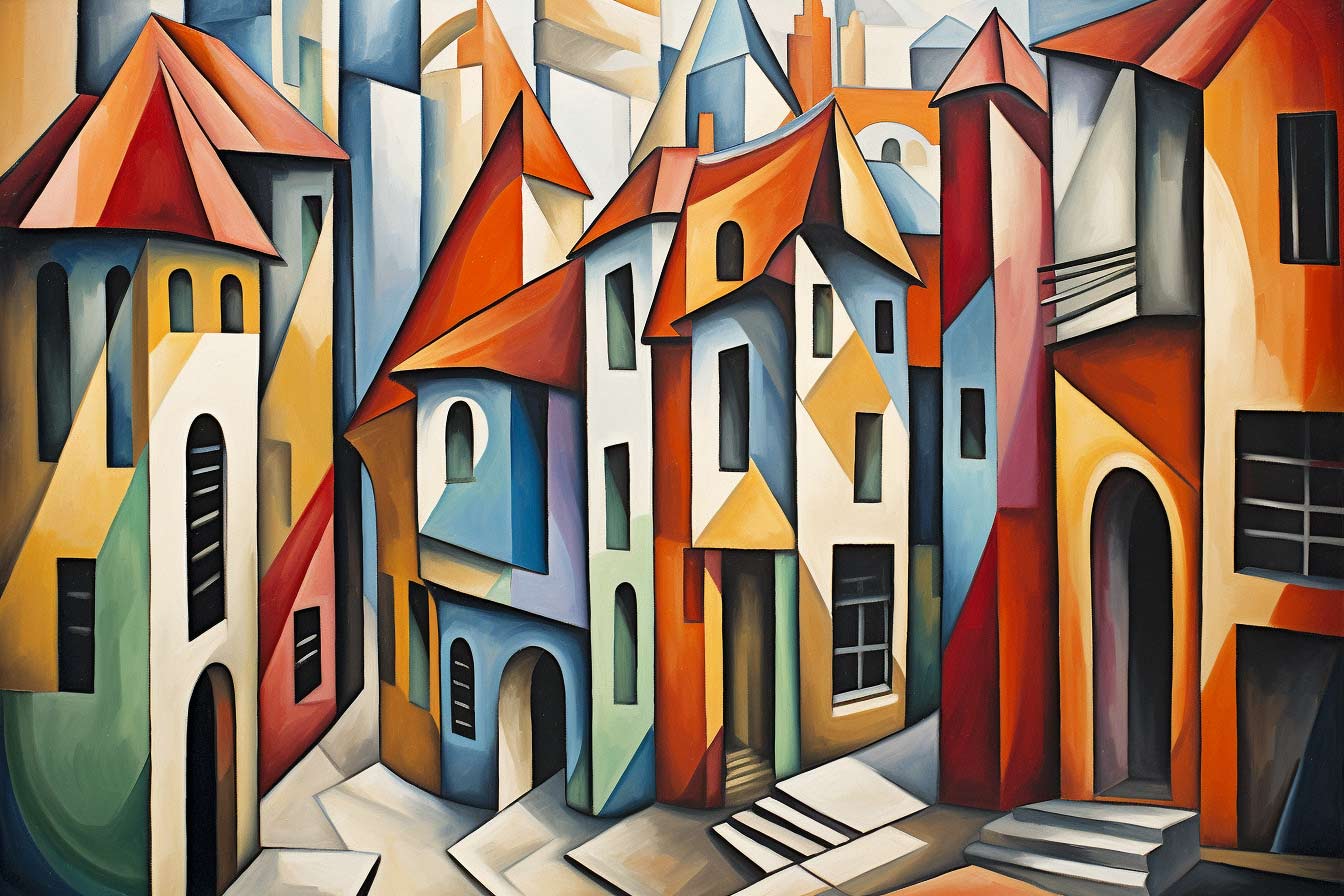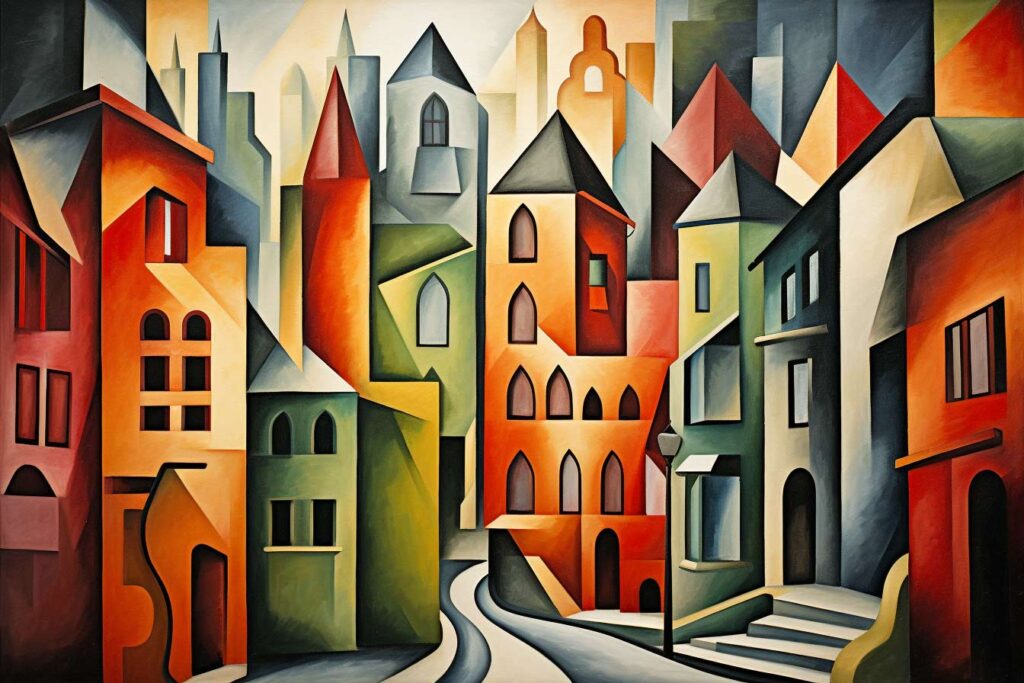Reimagining the Iconic Street
In the vast tapestry of art, there lies a strand of thought which is fascinated, not by the mimetic representation of reality, but by the breakdown of that reality into its constituent shapes and forms. This strand, woven intricately by the hands of the avant-garde, is Cubism. The early cubists sought not just to depict the world, but to analyze and abstract it, rendering the familiar into the unfamiliar, yet preserving the essence of the subject.
From the Seeds of Proto-Cubism
Before the full bloom of Cubism, the tendrils of what is now termed Proto-Cubism began to wind their way through the art world. Artists, drawing inspiration from both African and Iberian art, embarked on a quest to decode the very essence of the objects they painted. This movement was not solely an intellectual endeavor but was a reflection of the artists’ desire to capture the spiritual essence and primal energy found in non-European cultures.

The Pinnacle of Urban Landscape
If one were to saunter through the annals of any city, one would find streets and squares that pulse with life, resonating with stories from epochs gone by. Consider, for a moment, the legendary square of Place de la Concorde in Paris. Its regal obelisk and monumental fountains have seen history’s ebb and flow, from revolutions to celebrations.
Yet, how would one capture the spirit of such a place using the prism of Cubism? The task is to distill its vast essence into geometric shapes, a challenge indeed, but not an insurmountable one.
First, break down the square. The obelisk could transform into a series of interconnected triangles, each perhaps a different shade to capture the play of light and shadow. The fountains could be reduced to circles and ellipses, the spouting water depicted by jagged lines and shards, reminiscent of the movement and chaos of the water’s flow.
The grandeur of the surrounding buildings can be fragmented into rectangles, their windows perhaps smaller squares within them. Yet, despite this geometrical deconstruction, one must strive to maintain a semblance of the original, ensuring that the observer, while intrigued by the abstraction, still feels the soul of Place de la Concorde.
In dissecting our iconic streets and squares, abstracting them into their geometric essence, we do not diminish their value or importance. Instead, we offer a fresh perspective, a new lens through which to view the familiar. Like the early Cubists, we delve deeper than the surface, seeking the underlying structure, the rhythm, and the heartbeat of the urban landscape. Through this act, we honor the history, the stories, and the essence of these iconic places, while also propelling them into the realm of modern interpretation.
